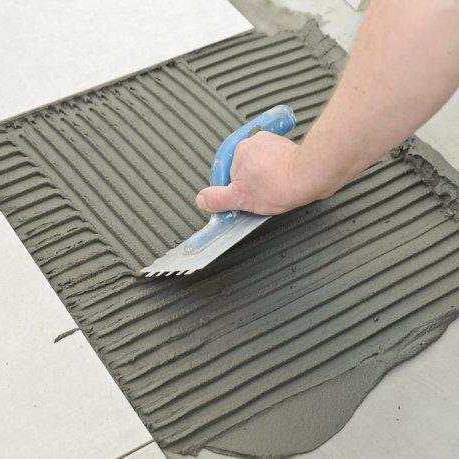
Oct . 13, 2025 13:20 Back to list
Mortar Bonding Agent: High-Strength, Waterproof Adhesion
EIFS Bonding Mortar Additive: Field Notes, Specs, and What’s Actually Working
If you’ve been around job sites as long as I have, you know crews want a mortar bonding agent that sticks on day one and still sticks after the first harsh winter. This product—EIFS BONDING MORTAR ADDITIVE—has been popping up in my inbox from contractors who swear it saves time and callbacks. To be honest, I was skeptical at first. Then I saw their pull-off numbers.

What’s driving demand right now
Three trends: polymer-modified mortars that bond to tricky substrates, low-VOC formulas to satisfy ever-stricter indoor air rules, and EIFS/ETICS systems that need reliable adhesion under thermal cycling. In fact, specifiers are asking for data tied to ASTM and EN bond tests—not just marketing claims.
Product snapshot
EIFS BONDING MORTAR ADDITIVE is a polymer blend (mixture for exclusive usage; first released in 2019). Origin: NO.1 BUILDING, TECHNOLOGY CERTER, HIGH-TECH ZONE, SHIJIAZHUANG CITY, HEBEI PROVINCE, CHINA. It’s designed for EIFS base/adhesive coats, patching, and re-profiling where a mortar bonding agent with dependable adhesion is critical.
| Parameter | Typical value (≈, real-world use may vary) |
|---|---|
| Polymer type | Acrylic/SBR hybrid, waterborne |
| Recommended dosage | 5–10% polymer solids by cement weight (or per mix design) |
| Bond strength (ASTM C882, slant shear) | ≥ 10 MPa at 28 days (lab average) |
| Pull-off (EN 1542) on concrete | ≥ 1.5 N/mm²; cohesive failure in substrate common |
| Open time / pot life | ≈ 40–60 min at 23°C, 50% RH |
| Service temperature | -20°C to +70°C once cured |
| VOC / Compliance | Low-VOC; suitable for LEED intents; ISO 9001 plant |
How to use it (the short, honest version)
- Materials: Portland cement, graded sand, clean water, the mortar bonding agent, optional fibers, and modifiers as specified.
- Surface prep: Sound, clean, SSD (saturated surface-dry). Shot-blast or grind if glossy. Prime porous substrates if needed.
- Mixing: Add liquid additive to water, then dry blend. Don’t chase slump with water—use the mortar bonding agent ratio recommended.
- Application: Trowel, spray, or notch as per EIFS layer. Respect ambient 5–35°C. Light mist curing in hot/windy conditions.
- Testing standards to cite: ASTM C882 (bond), ASTM C1059/C1059M (latex), EN 1542 (pull-off), EN 998-1 (render mortar).
- Service life: 15–25 years in EIFS envelopes with proper detailing; check movement joints and drainage, obviously.
- Industries: Facade systems (EIFS/ETICS), precast repair, tilt-up, transportation structures needing polymer-modified patches.
Real-world feedback and test data
Contractors tell me “butter coat grip is immediate,” and inspectors like the consistent pull-off results. Internal lab data (23°C/50% RH) showed C882 ≥10 MPa at 28 days; freeze–thaw after 50 cycles retained ≈90% bond. On-site EN 1542 tests in a coastal job averaged 1.7–2.0 N/mm². Not bad, considering the salt spray.
Vendor comparison (quick look)
| Vendor/Product | Bond (C882, 28 d) | Freeze–thaw retention | Notes |
|---|---|---|---|
| EIFS BONDING MORTAR ADDITIVE | ≈10–12 MPa | ≈90% | Low VOC; EIFS-focused support |
| Generic PVA additive | 3–6 MPa | ≈60–70% | Not ideal for wet/freeze exposure |
| Standard SBR latex | 7–9 MPa | ≈80–85% | Good all-rounder; fewer EIFS perks |
Values indicative; confirm with your project testing.
Customization and support
Formulation tweaks—open time, viscosity, and winter-grade versions—are available. For large facade packages, I’ve seen mix designs tuned for specific foam boards and mesh weights, which is where a mortar bonding agent really pays off.
Mini case files
- Cold-climate EIFS retrofit: pull-off (EN 1542) averaged 1.8 N/mm² after 70 freeze–thaw cycles; zero delamination noted.
- Transport hub patching: fast return-to-service; inspectors reported cohesive substrate failure at slant shear.
- Coastal mid-rise: salt-mist exposure with monthly washdowns; bond retained, hairline cracking minimized (contractor note).
Certifications: ISO 9001 plant; supports EN 998-1 class OC for mortars; compliant with common low-VOC frameworks (check regional lists). Description tag: “Mixture for exclusive usage”; first posted 2019-09-18 03:57:48.
Contact/Origin: NO.1 BUILDING, TECHNOLOGY CERTER, HIGH-TECH ZONE, SHIJIAZHUANG CITY, HEBEI PROVINCE, CHINA.
Authoritative citations
- ASTM C882/C882M – Standard Test Method for Bond Strength of Epoxy-Resin Systems Used with Concrete by Slant Shear.
- ASTM C1059/C1059M – Standard Specification for Latex Agents for Bonding Fresh To Hardened Concrete.
- EN 1542 – Products and systems for the protection and repair of concrete structures – Pull-off test.
- EN 998-1 – Specification for mortar for masonry – Rendering and plastering mortar.
-
Cellulose Ether | High Purity, Fast Hydration, Stable Flow
NewsNov.17,2025
-
Cellosize HEC Thickener – High Purity, Fast-Dissolving
NewsNov.17,2025
-
Cellulose Ether: High-Purity Liquid Thickener, HEC Cellulose
NewsNov.17,2025
-
VAE Powder (RDP): High Adhesion & Flexibility for Mortars
NewsNov.17,2025
-
Cellulose Ether: High Purity, Fast-Dissolving, Stable Flow
NewsNov.17,2025
-
Cellosize HEC Thickener – High Purity, Fast-Dissolving
NewsNov.11,2025







